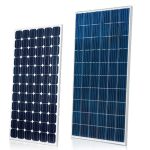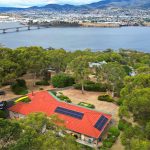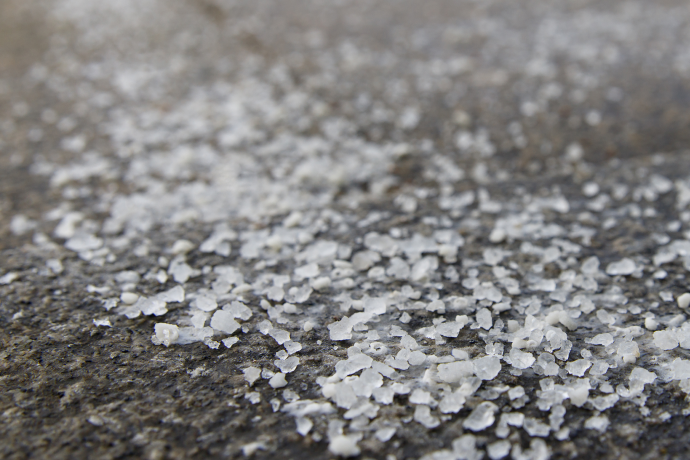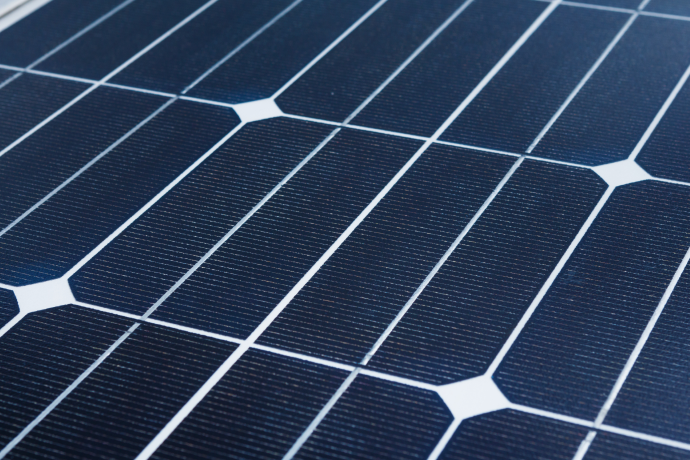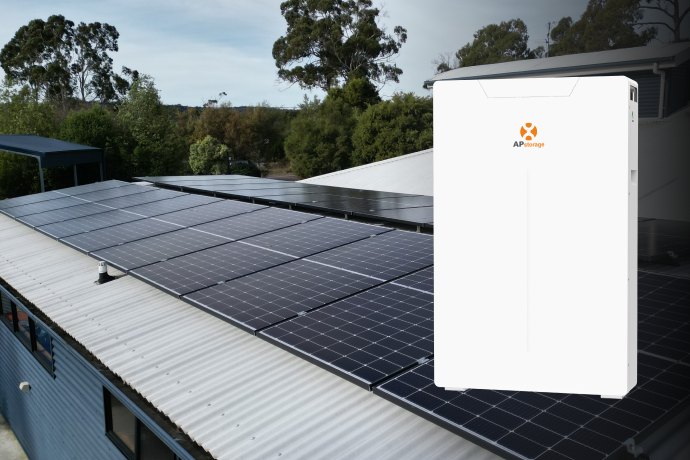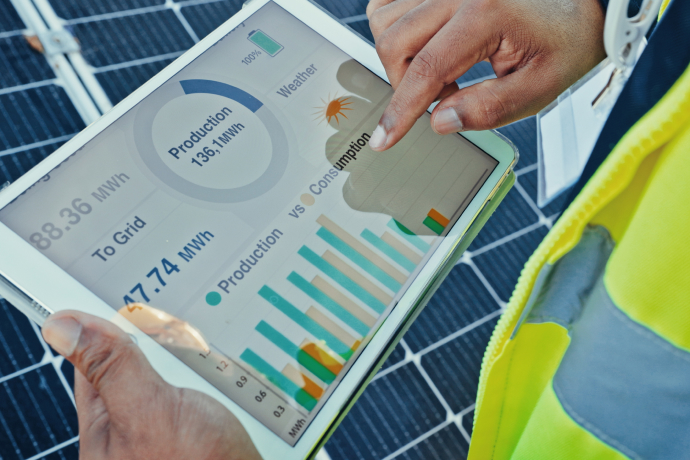One of the questions asked when having solar panels installed is can a roof support them. The good news is most roofs are strong enough to sustain the weight of solar panels. However, as not all roofs are the same, it is important to make sure your roof can support them before committing to installation. In this article we will explain solar panel weight, the types of roofs that can support them, and how to find out if your roof is compatible with solar panels.
Understanding the Weight of Solar Panels on a Roof
Understanding the weight of solar panels is the first step to working out if a roof can support them. The weight of solar panels is influenced by the type of materials used, with most solar panels in Australia weighing between 18 and 27kg each. As the average solar installation is 6.6kW, which requires about 17 to 20 panels, the total weight of installation could be around 500kg.
As each panel measures at approximately 1.7m2, the total solar panel measurement would be about 34 to 38m2. While this sounds like a lot of weight and coverage over a roof, it is important to understand that most roofs are built with a load bearing capacity to support not only roof materials but objects like solar panels, air conditioning units and satellite systems.
Factors that Affect a Roof’s Ability to Support the Weight of Solar Panels
When deciphering if your roof can support the weight of solar panels, it is important to take into account four main considerations. The type of roof you have, roof material, roof area available, and structural integrity will all impact the viability of solar installation.
Type of Roof
There are three main types of roofs used when constructing a home. Each is distinguished by the level of slope. Here are the main roof types and an explanation of their suitability to withstand the weight of solar panels.
1) Hip Roof. A hip roof is a roof with a central peak and sides sloping downwards toward the house. It is the most common roof style in Australia. Hip roofs are stable and self bracing, with four inward sides making this style of roof very strong and structurally sound to withstand solar panel weight.
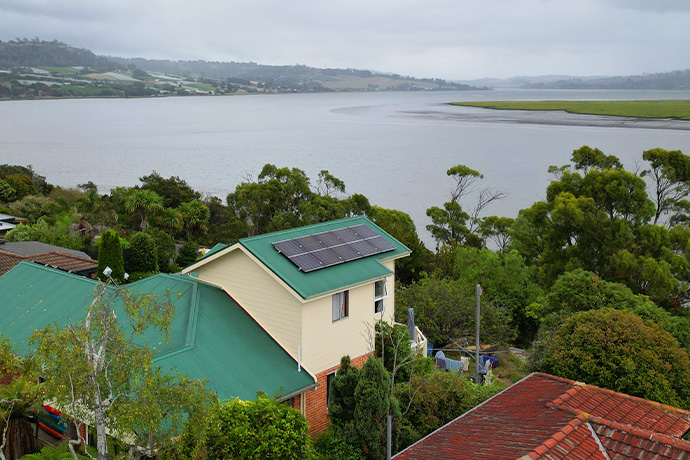
2) Skillion Roof. A skillion roof is a roof that slopes on a slight angle and looks like a tilted flat roof, and often has a steep pitch to aid in drainage. Skillion roofs can be extremely strong and robust depending on the design and quality of materials used.
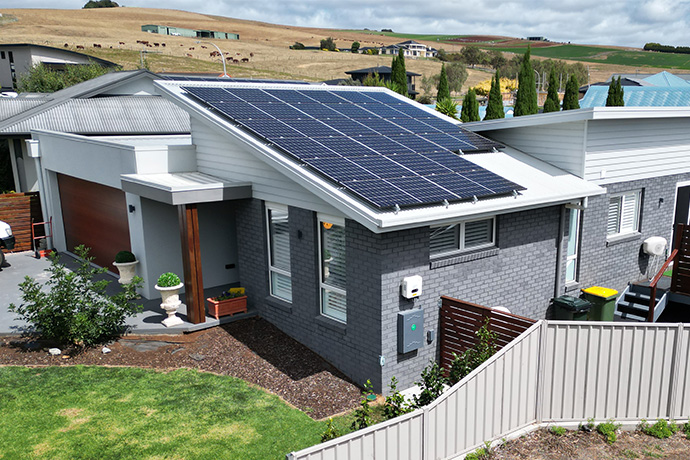
3) Flat Roof. A flat roof is completely flat and often seen on homes with modern designs. They are easy to install solar panels on, however, these roof types can be troublesome in areas with high rainfall due to drainage issues. Flat roofs are very strong provided they are built well, with many commercial buildings using flat roofs because of their ability to support heavy systems.
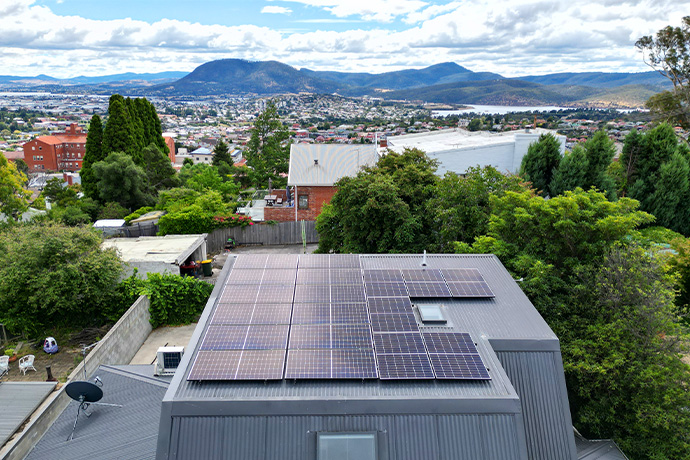
Roof Materials
Roofs in Australia are made from different materials, some of which are more conducive to solar panel installation. We examine the main roof materials and how well they support the weight of solar panels.
- Asphalt shingles: These are sturdy and strong tiles that are ideal for supporting the extra weight of solar panels and racks. They are known for their durability and do not require extensive maintenance unlike other roof materials. The asphalt material makes it easy to install railings and racks on, and being lightweight it is easy to replace a tile without changing the solar setup drastically.
- Concrete tiles: Perfect for solar panel installation, concrete tiles are affordable and durable. The only drawback is they are heavier than other roof materials and may need to be reinforced to withhold the extra weight of a solar system.
- Metal: Metal roofs are the best for solar installation. They are lightweight and will easily withstand the extra weight of a solar system. They are also easy to install as no drilling is required. The solar panel frames simply fit into the seams of the metal roof.
- Clay tiles: Clay tiles are one of the worst roof materials for solar panel installation. They are a brittle material that breaks easily and makes installation challenging. Clay tiles can withstand the weight of a solar system, but their fragility makes other roof types easier to work with.
- Slate tiles: As the heaviest of all roofing materials, slate tiles need to be reinforced before solar panels are installed. A solar installer will need to do a structural assessment to determine the capability to support solar panels.
Roof Space
The amount of space on your roof is important with regards to the maximum size of a solar system you can install. If you have a townhouse with limited roof space, you may not have enough room to fit solar panels. Alternatively, if you do fit the entire roof with solar panels, it may be too heavy to withhold the weight. If you are concerned about roof space, it is important to have a safety inspection by a qualified solar expert.
Below is a table showing common solar system sizes, how many panels each requires, and the roof space needed.
| Solar System Size kW | Number of Panels required | Roof Area Required |
| 3kW | 7-9 panels | 11.9-15.3m2 |
| 5KW | 12-15 panels | 20.4-25.5m2 |
| 6.6kW | 15-20 panels | 25.5-34m2 |
| 8kw | 19-24 panels | 32.3-40.8m2 |
| 10kW | 24-30 panels | 40.8-51m2 |
Structural Integrity
An important way to determine if a roof can support the weight of solar panels is to look at its structural integrity. This refers to the roof’s ability to withstand extra weight from external forces like snow, wind and rain without collapsing. The roof plays an essential role in the success of a solar panel installation and must be structurally sound. When looking at structural integrity, we look at the condition of the roof and the age of the roof to gauge load bearing capacity.
- Roof age: This is an essential consideration as old roofs may not be as robust as they once were. Roofs that are over 20 years old will need to be examined prior to installation. Older roofs may need additional structural reinforcement, repairs or replacement, depending on the level of degradation.
- Condition: Any damage, wear and tear on the roof from accidents or weather occurrences can interfere with a roof’s ability to support the extra weight of solar panels.
How do I Find Out If My Roof Can Support Solar Panels?
While most roofs will be able to support the weight of solar panels, it is important to have a professional inspection prior to organising your solar system installation. To do this, contact a solar expert to evaluate the roof stability for the size solar system you are considering installing. If the roof is strong enough to support the additional weight, you will receive a certificate. If not, they will recommend the necessary changes to ensure the roof is safe for panel installation. Once the changes have been made, solar installation will be able to begin.
Roof Types That are More Challenging For Solar Panels
Some roofs are more challenging or solar panel installation. The roof may be too steep or the material too flimsy to handle the panel weight. We take a look at all the roof types that may make installing solar panels difficult.
- Roofs made of asbestos: Roof tiles containing asbestos can present severe challenges for solar panel installation. Asbestos is a material that was used in construction in homes built before the 1990s so some homes may still have asbestos roofs. In this case, the installer will have to evaluate if the solar panels can be installed safely or if the roof needs to be replaced as asbestos that is disturbed can be dangerous and carcinogenic. If the roof tiles are made of asbestos, they must not be drilled into so alternatives need to be discussed. Options may include using non penetrative mounting systems, relocating the solar panels to a different area like the ground if possible, or removing and replacing the roof.
- Tin tiled and pressed metal roofs: It is harder to install solar panels on tin tiled or pressed metal roofs as they are thin and fragile and more prone to damage. Tiled tin roofs cannot hold the body weight of installers so installation is difficult. Pressed metal roofs are thin and weak with structural issues that make solar panel installation impossible.
- Extremely steep roofs: The steepness of a roof can make it difficult to install solar panels and increase installation costs. If a roof has a slope of 35 to 45 degrees, it is ideal for solar panel installation. However, anything over 45 degrees poses several problems. A roof with a slope over 45 degrees can cause damage to the panels during installation and may not maximise sunlight capture, which will lead to lower energy output. For roofs over 45 degrees angle, alternative installation methods like ground mounted systems can be explored.
What Impact will Solar Panels Have on my Roof?
While you may worry that installing solar panels will have a negative impact upon your roof, the opposite is generally true. As long as the roof was assessed and deemed structurally sound, solar panels provide coverage and protection to your roof, protecting from sunlight, damaging weather and other potential sources of damage. Solar panels will not cause any damage to your roof, but rather act as a protective mechanism.
Most roofs can handle the weight of solar panels as roofs are built with a load bearing capacity to support additional features. It is always important to find out if your roof can support the type of solar system you want. This article explains solar panel weight and how to work out if your roof can support a solar system. For further information, the team at Tasmanian Safer Solar are just a phone call away.

